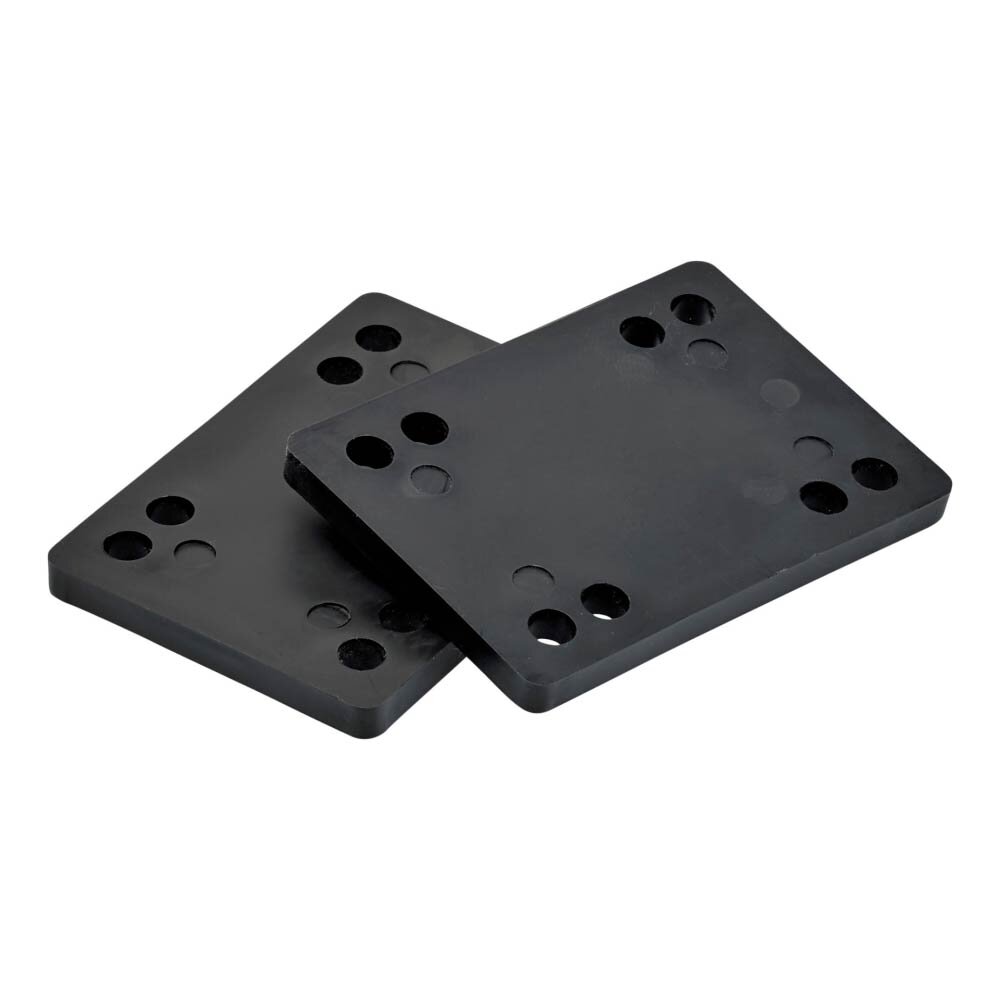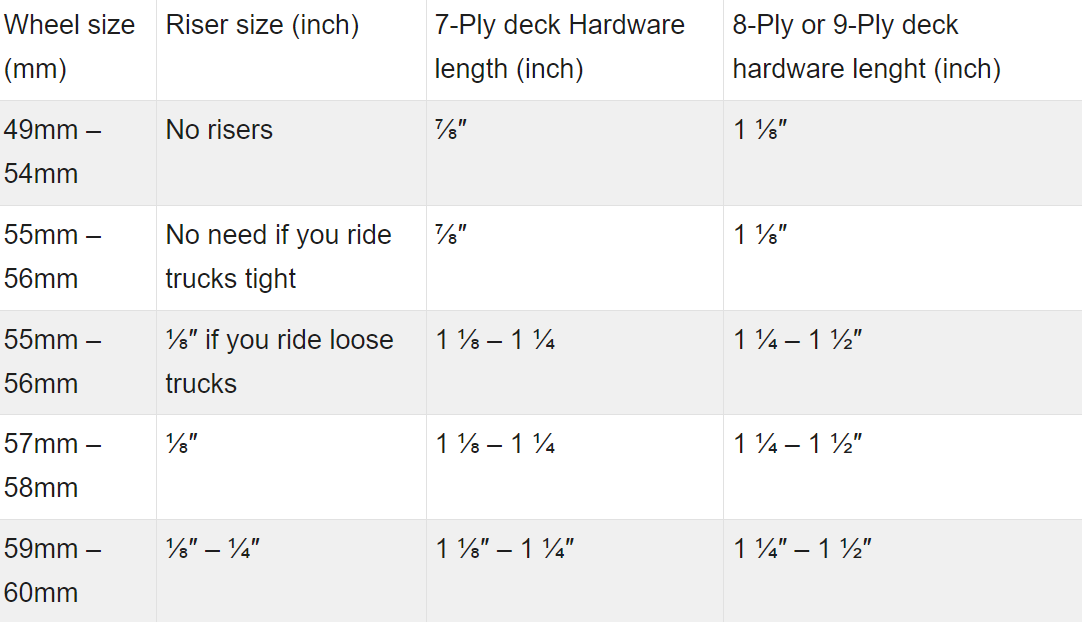What are Skateboard Riser Pads, and How Will it Affect Your Board?

Disclosure:
My main reason for trying riser pads was to prevent wheel bite; on cruiser boards, I liked it, but I can't say the same for regular skateboards. There are many reasons to use riser pads; with them, you can carve better, prevent wheel bite or use shock pads for a smoother ride.
There are more cons than pros on a regular skateboard, but this is a subjective opinion. In this post, you will learn about the good and bad parts that come with risers.
The Purpose of Riser Pads
There are many reasons for using riser pads; the most common use is to prevent wheel bite, which happens if the gap between the deck and wheels is too small, this usually occurs when you have large wheels.
Riser pads are mounted on the board to increase the space from your deck to your wheels; this provides more clearance and allows deeper carving.
Sometimes your bushings are too soft, and riser pads would surely help, but in this situation, I would recommend changing your bushings instead. Riser pads are much better for cruiser boards and longboards, so technical skaters should avoid them.
A thin shock pad could be helpful for a regular skateboard, but with a riser, the center of gravity would be too high up, which will make it harder to perform tricks on your board.
Angled riser pads have a different purpose. They optimize the turning radius without taking away balance. It is necessary to have angled riser pads if you want to carve on skateboards, longboards, or cruisers; it will become much more challenging without them.
Riser Pads VS Shock Pads
Riser pads and shock pads almost look the same, but they have a different purposes. Regular riser pads are usually meant to prevent wheelbite, and shock pads are mainly for shock absorption. So the question is, shock or riser pads?
I would recommend shock pads because they provide a smoother ride on rough pavement, they are thinner than riser pads, but they still help with wheel bite, and they are thin enough to use on skateboards. In addition, shock pads are made of soft rubber, while riser pads are made of hard plastic; the soft rubber of shock pads can also prevent stress cracks.
Riser pads work better if you need the extra height, you can stack shock pads, but you are better off using riser pads instead. If you want to carve, you should go for an angled riser pad.
Standard Riser Pads

Riser pads come in many sizes and angles; this isn't relevant for regular skateboards cause they only need the standard sizes.
The standard sizes for skateboards are Typically 1/8″ to 1/4″ and can be found on skateboard setups; though the latter is rare, the large ones are meant for longboards and cruisers, which have larger wheels.
Angled Riser Pads
Angled skateboard risers aren't meant for a regular skateboard; they are used in longboarding and cruiser boarding to make carving easier. You can make your board super responsive by putting the risers at the right angle.
Angled risers come in different sizes and shapes and keep the wheels away from the base plate. If you get softer angled risers, you can do deeper carving and snap back quickly.
Shock Pads
Shock pads are excellent because they reduce vibrations and impact and prevent cracking on the board, and since they are small, they work fine on a regular skateboard too.
In What Situation do you Need Riser Pads?
You probably need riser pads if you experience a lot of wheel bite. Wheel bite is when your wheels come in contact with the underside of your board, and you suddenly stop; this can result in injuries.
If you have big wheels, wheel bite occurs much more often. Riser pads will help with this, but I think you should only use pads on longboards or cruiser boards.
Other factors for using pads are your weight, bushing hardness, the diameter of your heels, and the thickness of your trucks.
Table for hardware size if you need Riser pads.

Pros of Using Riser Pads
something fun with riser pads is that theoretically, you will ollie higher with them; because the tail is higher up, you will get a better pop. Aside from this, the only upside to riser pads would be preventing wheel bite.
Cons of Using Riser pads
There aren't a lot of downsides, but the biggest one would be that performing tricks is more challenging with them on. The center of gravity is higher, so it is harder to control and less stable.
Conclusion
Riser/shock pads can be used on regular skateboards if you use 1/16″ shock pads or 1/8″ riser pads. They prevent wheel bite but remember that they affect your skateboarding ability. Landing tricks with Pads becomes more difficult because the center of gravity is higher, making your board harder to balance.
Shock pads are better for regular skateboards, and if you jump down big stairs, I recommend them to prevent stress cracks. Riser pads are generally used on cruiser boards or longboards. Angled pads are never used on skateboards.
Disclosure:
